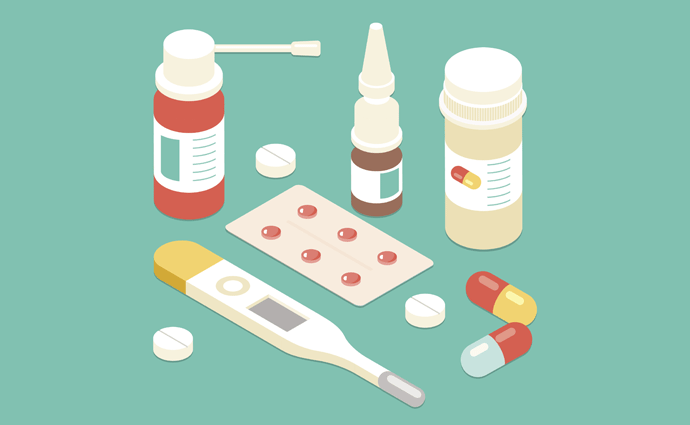Reducing the Rate of Hospital-Acquired Conditions Saved $7.7B
The estimated rate of hospital-acquired conditions fell 13 percent from 2014 to 2017, resulting in significant clinical and financial improvements for hospitals.

Source: Thinkstock
- A significant reduction in hospital-acquired conditions (HACs) saved providers $7.7 billion in hospital costs since 2014, the Agency for Healthcare Research and Quality (AHRQ) recently reported.
New data from AHRQ and CMS shows providers prevented and reduced adverse drug events, catheter-associated urinary tract infections, falls, and other hospital-acquired conditions by 910,000 events from 2014 to 2017.
The preliminary analysis estimated a 13 percent drop in HACs, decreasing from 99 per 1,000 acute care discharges to 86 per 1,000 during the same timeframe.
Providers made significant progress with decreasing the rates of Clostridioides difficile infections (37 percent), adverse drug events (28 percent), post-operative venous thromboembolisms (17 percent), and ventilator-associated pneumonia (13 percent).
The rate of central line-associated bloodstream infections also fell six percent from 2014 to 2017, while a five percent reduction was observed for catheter-associated urinary tract infections, falls, and obstetric adverse events, respectively.
READ MORE: Hospital-Acquired Conditions Increase Hospital Costs by $2B
However, opportunities for improvement still exist. For example, the rate of pressure ulcers actually increased during the timeframe, going up six percent.
“The updated estimates are a testament to the successes we’ve seen in continuing to reduce hospital-acquired conditions,” AHRQ Director Gopal Khanna, MBA, stated in a press release. “There’s no question that challenges still remain in addressing the problem of hospital-acquired conditions, such as pressure ulcers. But the gains highlighted today were made thanks to the persistent work of many stakeholders’ ongoing efforts to improve care for all patients.”
The updated research from both agencies indicates that patient safety is a top priority for CMS and the agency’s efforts are making healthcare safer for patients by pulling the industry closer to the overall goal of reducing HACs by 20 percent by 2019.
CMS set a goal of decreasing hospital-acquired conditions by 20 percent between 2014 and 2019. In the most recent analysis, AHRQ estimated that the HAC reduction goal would lead to 1.8 million fewer hospital-acquired conditions during the five-year period and save a total of $19.1 billion in hospital costs.
Hospitals are well on their way to achieving the CMS goal because of several initiatives run by CMS, AHRQ, the Centers for Disease Control and Prevention, and other federal and private partners, federal officials explained.
READ MORE: Opioid Overdose Care Totals $1.94B in Annual Hospital Costs
For example, AHRQ has developed a range of patient safety tools and resources, including the Comprehensive Unit-based Safety Program to reduce hospital-acquired conditions. The resources for providers aim to give hospitals trusted information on HACs and how to reduce them.
CMS also works through the Hospital Improvement Innovation Networks (HIINs) to share best practices with over 4,000 acute care hospitals. HIINS regularly communicate with hospitals and other providers to quickly and effectively implement evidence-based practices to improve patient safety.
“CMS is delivering on improving quality and safety at America’s hospitals. Our work isn’t done and we will continue our efforts to hold providers accountable for delivering results,” CMS Administrator Seema Verma stated in the press release.
Despite federal initiatives aimed at reducing HACs, AHRQ still detailed several challenges with getting hospitals to reduce the rate of HACs.
“In spite of the volume and velocity of data flowing into and through healthcare, providers, health system leaders, and other stakeholders lack sufficient information to guide their efforts as they work to prevent HACs,” the agency stated in the report. “Similarly, patients’ choices often occur without the robust information they need, and this limitation constrains their efforts to be engaged in their own care.”
READ MORE: 3 Strategies to Reduce Hospital Readmission Rates, Costs
On top of establishing a foundation of trusted data and knowledge, the industry also needs to pair the information with real-life capabilities for hospitals and providers, AHRQ stated.
“When providers trust information they receive about patient safety, they are in better positions to understand these ongoing problems and to effectively prioritize and target them with safer practices,” the agency wrote.
Some hospitals transforming data into action when it comes to HACs include Augusta Health in Virginia. The health system is pairing EHR data with geospatial mapping tools to visualize how multi-drug resistant organisms (MDROs) spread between patients.
“We used images of the hospital floor plan imported into Tableau, then we geocoded the locations of the patient rooms on top of that using XY coordinates on those images, so it looks like the rooms correspond to the floor plan,” explained Decision Support Manager Penny Cooper, DHSc, to HealthITAnalytics.com.
“Then we incorporate the positive organisms, the date, and all of the rooms the individual was in – they might move from the ICU to a step-down unit before they might be discharged from our medical unit – so you would see the time period that they spent in each one of those locations.”
Augusta Health’s initiative helped to prepare the system to develop and deploy infection control protocols.
Hospitals can similarly use information to make progress with HAC reduction by first identifying a well-defined use case. Providers cannot feasibly tackle all HACs, but prioritizing conditions that can make the largest clinical and financial improvement is key to starting the journey.
Hospitals should then use EHR data to target patients at risk of developing an HAC. Coupling the data with infrastructure that allows for real-time data access can also help.
